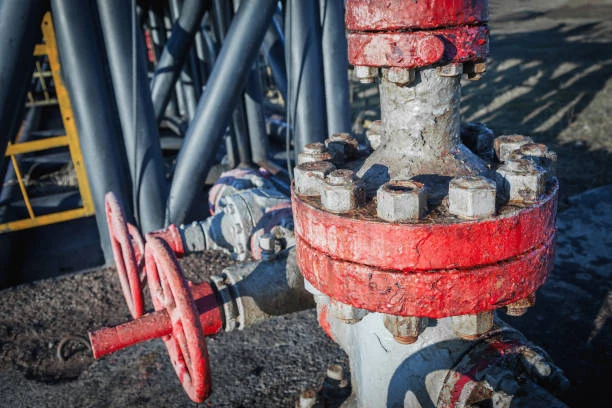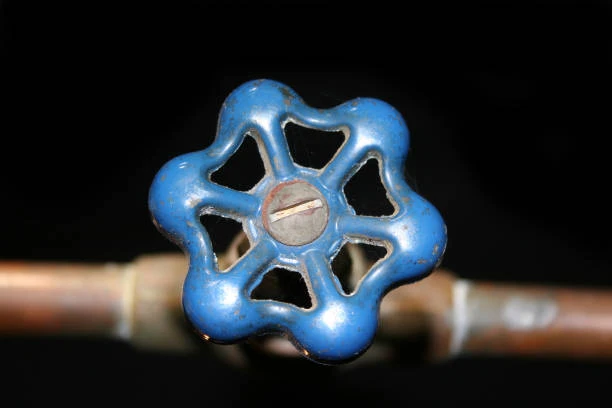Water valve repairs, although a routine maintenance task in many homes and communities, can sometimes lead to unexpected changes in water pressure and water discoloration. If you’re a resident of Florham Park, New Jersey, you may have recently experienced such issues following water valve repairs in your area. While these issues are typically temporary and often resolve themselves once the repairs are completed, understanding the cause and knowing how to address them can make the process much smoother for homeowners.
In this article, we’ll explore the reasons why water valve repairs can cause pressure fluctuations and water discoloration, the steps you can take to manage these issues, and how to ensure that your water system is functioning optimally after such repairs.
Understanding Water Valves and Their Role in the Water System
Water valves play a crucial role in regulating the flow of water to and from a property. They are an essential component of municipal water systems, responsible for controlling water pressure, distribution, and shutdowns during emergencies or maintenance. In Florham Park, as in many other communities, water valves are useful to manage water flow to homes and businesses, ensuring that the water supply remains steady and safe.
Water valves are typically located at key points within the water system, such as at water mains, connections to individual properties, or at intersections between different pipelines. These valves can be turn on or off, adjusted, or repaired as need to maintain the system’s integrity.
Why Water Valve Repairs May Cause Pressure Changes
One of the most common side effects of water valve repairs is a temporary change in water pressure. This fluctuation can result from several factors related to the repair process.
1. Air Trapped in the System
When a water valve is close, air can become trapped in the pipes. When the valve is reopened after repairs, the pressure may change abruptly as the trapped air is released. This air can cause fluctuations in water pressure, and in some cases, it may even lead to short bursts of high pressure followed by a drop in pressure.
2. Temporary Changes in Water Flow
During the repair process, the flow of water through the pipes may be disrupted or alter. For example, if a section of pipe is isolated for repair, the surrounding areas may experience a shift in pressure as the water flow is rerouted or temporarily halted. This can result in either a drop in pressure or, in some cases, a spike.
3. Valve Adjustment
Water valve repairs may also involve adjusting the valves to ensure they function correctly. If the valve is not set back to its original position or calibrate properly, it can cause water pressure issues, either raising or lowering the pressure beyond the normal range.
4. Changes in Pipe Configuration
In some instances, repairs to water valves may require adjustments to the overall pipeline configuration. These changes can result in slight shifts in pressure as the new configuration is integrated into the system. Although the changes are usually small, they can still be noticeable, especially in homes with sensitive plumbing systems.

Water Discoloration After Valve Repairs
In addition to pressure fluctuations, another common issue that homeowners may notice following water valve repairs is discoloration in the water supply. The appearance of rusty, brown, or cloudy water can be unsettling, but it is generally harmless and resolves itself in a short amount of time.
1. Sediment Disturbance
Pipes in older water systems, particularly those made of iron or steel, may accumulate sediment over time. When a water valve is repair, the disruption in the flow of water can stir up these sediments, causing them to mix with the water supply. The result is discolored water, typically brown or yellow in appearance.
2. Corrosion
Corrosion inside the pipes can also be a contributing factor to discolored water. During water valve repairs, the flow of water can temporarily dislodge rust or other corroded materials from the interior of the pipes, which may end up in your water supply. While the presence of rust or corrosion may make the water look unpleasant, it usually doesn’t pose a health risk in small quantities.
3. Changes in Water Pressure
As mentioned earlier, changes in water pressure can disturb sediments or minerals within the pipes. When pressure is restore after valve repairs, these particles can enter the water stream, causing discoloration. In most cases, this issue will clear up within a few hours once the system stabilizes.
How to Address Water Pressure Changes and Discoloration
If you experience a sudden drop in water pressure or discoloration after water valve repairs, there are a few steps you can take to minimize the inconvenience and ensure your water system is functioning correctly.
1. Flush Your Pipes
To address water discoloration, the first step is usually to flush your pipes. Run cold water from a faucet or outdoor spigot for several minutes to help clear out any dislodged sediment or rust particles. You may want to start with the faucet closest to the main water supply, as this is where the water enters your home.
2. Check for Leaks
If you’re noticing persistent low water pressure after valve repairs, check your plumbing system for any leaks. A drop in pressure may indicate a problem with your pipes or fixtures, and it’s essential to identify and fix any issues promptly to prevent further damage.
3. Wait for the System to Stabilize
In many cases, water pressure issues and discoloration will resolve themselves after a short period. Water systems often need time to adjust after repairs, so be patient while the pressure and water clarity return to normal.
4. Contact Your Water Utility
If the issues persist for an extended period or you notice other problems such as a significant drop in pressure or unusual discoloration, it’s a good idea to contact your local water utility provider. In Florham Park, the water department can provide updates on the repair process and advise you on any ongoing issues.
5. Install a Water Filter
If you are concerned about water quality, installing a water filter or water treatment system can help remove any impurities that may be present in your water supply. This is especially important if your home relies on older pipes or if your water utility has a history of frequent repairs.
Preventing Future Issues with Water Valves
To prevent issues with water pressure or discoloration in the future, it’s essential to maintain your plumbing system regularly. Here are a few tips to help ensure your water valves and pipes remain in good condition:
- Regular Inspections: Schedule routine inspections with a licensed plumber to check for any signs of wear or corrosion in your pipes and water valves.
- Address Leaks Promptly: Small leaks can lead to significant pressure changes over time. Fixing leaks quickly can help avoid larger plumbing issues.
- Upgrade Your Plumbing: If your home has old, corroded pipes, consider upgrading to newer materials like PVC or copper. This can reduce the risk of sediment buildup and water discoloration.
- Know Your Water Supply: Stay informed about your local water utility’s maintenance schedule. Being aware of any plan repairs or upgrades can help you prepare for any temporary disruptions.
Conclusion
Water valve repairs, while essential for maintaining a healthy water system, can sometimes lead to temporary issues with water pressure and discoloration. By understanding the underlying causes of these problems and following the appropriate steps to resolve them, homeowners in Florham Park can minimize inconvenience and ensure that their water systems continue to operate smoothly.
While pressure fluctuations and water discoloration can be annoying, they are usually short-lived and can be addressed with simple measures like flushing pipes or adjusting water fixtures. By staying informed and proactive, you can ensure that your water supply remains safe and reliable long after the repairs are completed.
FAQs
1. How long will water pressure fluctuations last after water valve repairs?
Water pressure fluctuations should resolve themselves within a few hours once the system stabilizes. If the issue persists, it may indicate a problem with your pipes or fixtures, and you should consult a plumber.
2. Is discolored water safe to use?
Discolored water is usually harmless, but it’s a good idea to avoid using it for drinking or cooking until the issue resolves. Flushing your pipes can help clear up the discoloration.
3. What should I do if my water pressure drops too low after repairs?
If the water pressure remains low for an extended period, check your plumbing for leaks and contact your water utility provider for assistance.
4. Can water discoloration be caused by something other than valve repairs?
Yes, water discoloration can also be caused by issues like rust in old pipes, sediment buildup, or problems with the municipal water supply. If the discoloration persists, contact your local water provider.
5. How can I prevent water discoloration in the future?
To prevent future water discoloration, consider installing a whole-house water filter, maintaining your plumbing system, and addressing any signs of corrosion or sediment buildup promptly.


















